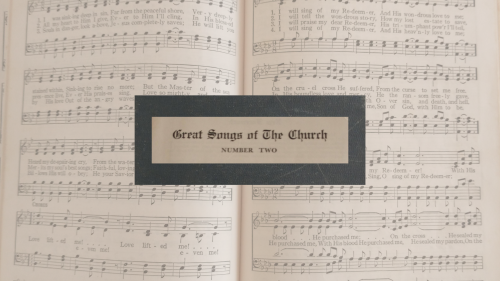
E.L. Jorgenson and Great Songs of the Church
A man pouring himself into his work tells the story of E.L. Jorgenson and his hymnal, Great Songs of the Church Number Two. Obviously, this story began with Number One. Jorgenson wanted to compile a volume of the very best songs for the church. This earlier volume published in 1926 enjoyed many years of popularity as the story continued. (You can view a copy of this hymnal here at the Abilene Christian University website.)
Elmer Leon Jorgenson was a minister in the Churches of Christ. These churches came from what is sometimes called the Restoration Movement or the Stone-Campbell Movement. The Disciples of Christ, often called the Christian Church (Disciples of Christ) also descended from this movement. The churches Jorgenson served loved him as a minister, but his heart wanted to help the people to sing. From the article “E.L. Jorgenson: A Song of Christian Love” by Dale Jorgenson, we read: “During the summer of 1906, Elmer writes, ‘it happened!’ God called him to preach, mainly by song.” So we find his heart in both volumes of this hymnal.
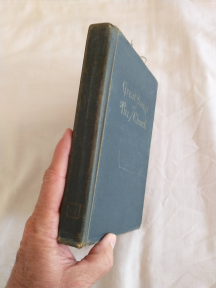
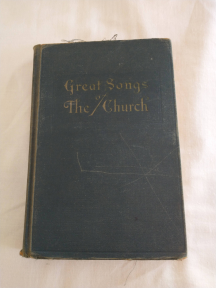
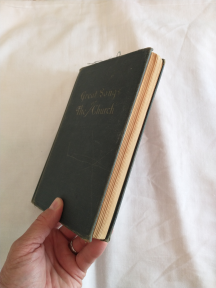
The Character of the Hymnal
In the Foreword of Great Songs of the Church, Jorgenson shared his philosophy in selecting the hymns to be included. “The standards followed were truth and soundness, first of all, then strength and clearness, poetic beauty and lyric quality – the music wedded to the words and fit to wing them to the heart.” The selection of the hymns appears to come from three sources: those great psalms and hymns from the Campbell Movement, “psalm paraphrases and gospel songs from J.H. Fillmore’s New Christian Hymn and Tune Book,” and “the work of the singer, musician and compiler William E.M. Hackleman.” (Information from https://www.therestorationmovement.com.)
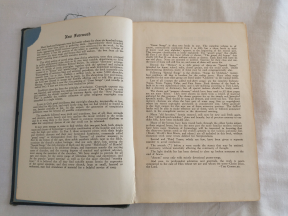
Probably the most unusual aspect of Great Songs of the Church is that Jorgenson chose to arrange the hymns in alphabetical order within the various sections. Although cautioned not to do this, it makes sense as Churches of Christ do not follow seasonal or liturgical themes. Therefore, there was no need to make a doctrinal or liturgical arrangement of the selections. I actually like it. It makes it much easier to find the songs. As a congregational hymn leader, I think of how much more convenient than repeating the hymn number at least three times to make sure that almost everyone present knows where to turn in the hymnbook.
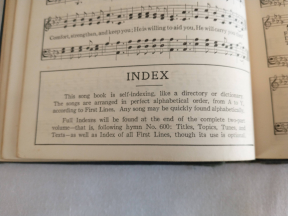
Great Songs of the Church Number Two
By 1935, according to an article by his nephew Dale Jorgenson, he began to be dissatisfied with the first volume of Great Songs of the Church. This sense rose simply from the fact that Jorgenson thought that he could do better. In finding the hymns to improve on the first edition, Jorgenson looked through 300 hymns and an aggregate of 60.000 songs. Then he did all the work that goes will the compilation of a hymnal. Then he dealt with all of the phone calls, permissions, editing, etc. The year 1937 saw the release of the “supreme labor” of his life. Great Songs of the Church Number Two contained 600 hymns.
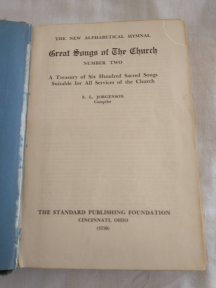
Although it had detractors, primarily because of Jorgenson’s theological position on end time events, this hymnal was very popular. His nephew writes that “the new book had sold nearly two million copies to about ten thousand churches—Churches of Christ and conservative Christian Churches—by the mid-1950’s.” According to an article from June 2020 on Abilene Christian University’s website, this hymnal went through 55 editions between 1937 and 1979, a little more than one each year. Jorgenson in the New Foreword which I find in my copy mentions “the 31st printing.” According to this same article that places the printing of this copy between 1949 (29th edition) and 1955 (34th edition).
This aligns with the fact that The Standard Publishing Foundation, or Company, of Cincinnati, Ohio, published the round-note editions during the 1950’s. The website www.therestorationmovement.com states, “In 1954, Jorgenson sold the round-note edition of Great Songs to Standard Publishing Company, representing the independent Christian churches.” According to the paper “The Influence of the Hymnal ‘Great Songs of the Church’ in Christian Churches” by John Conrad Wakefield, “Standard acquired rights to publish a round note edition of the hymnal in 1937.” Of course, shape-note editions were available from the very beginning. Many singers, particularly in the South, found them easier to sing from.
The Content of the Hymnal
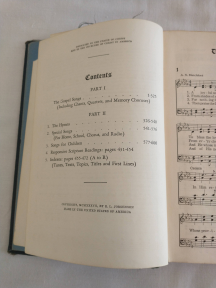
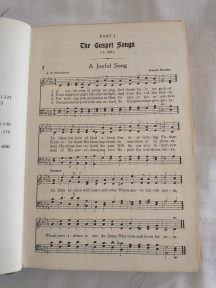
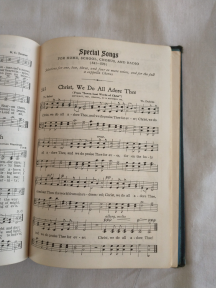
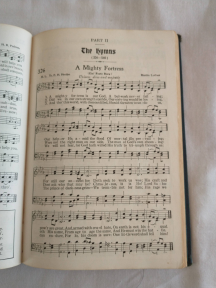
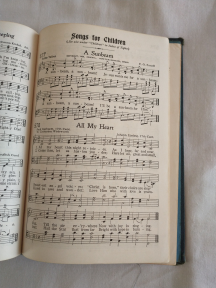
The Foreword in earlier editions mentioned that the hymnal did not include Responsive Readings in favor of simply using the Bible. However, these editions published by Standard included 52 Responsive Readings. The hymnal states “Selected by James De Forest Murch.” Standard Publishing employed Murch as an editor.
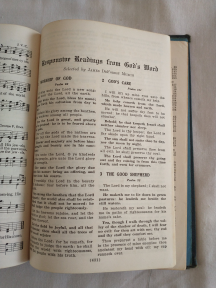
As a hymnal of Churches of Christ, the hymnal was designed to be used by only the human voice in worship. In addition, it included some songs which obviously anticipated instrumental accompaniment. This shows that this hymnal was also designed for use at home and other gatherings. For example, it contains anthems. Controversially, churches descended from the Stone-Campbell Movement who used instruments in worship also used this hymnal. In a similar vein, I find it interesting that my copy was used at one time by a Bible Baptist Church.
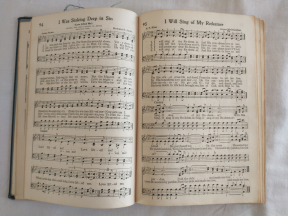
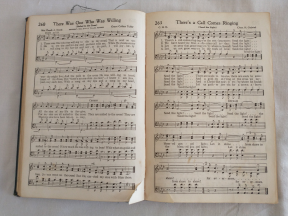
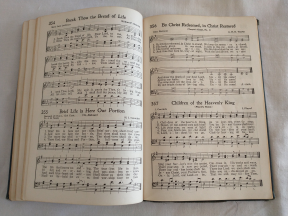
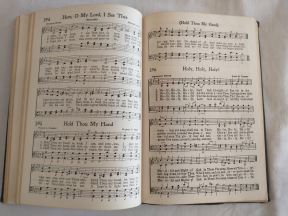
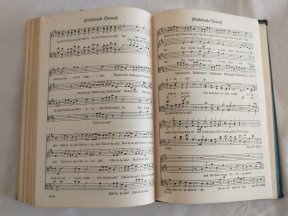
In addition to the Alphabetical structure of the hymnal, it includes a substantial set of indices. These include Responsive Readings, Tunes, Scripture Texts, Topics, Chants, Quartets, Short Memory Choruses, as well as First Lines and Titles.
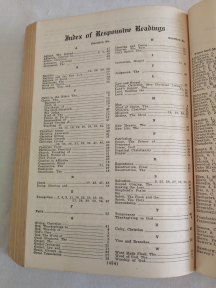
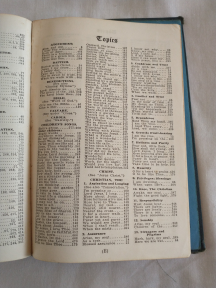
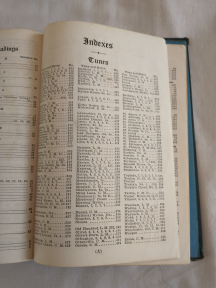
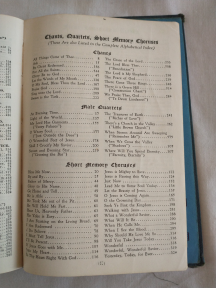
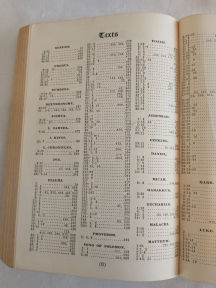
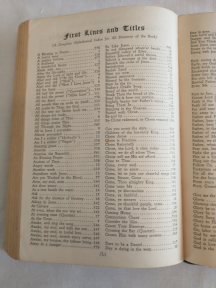
A final interesting feature: four songs printed inside the front and back covers bring the total number of hymns to 604.
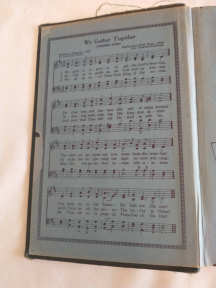
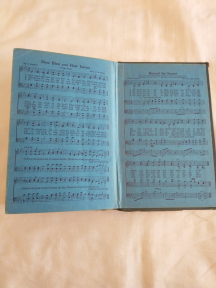
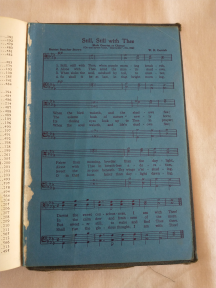
My Thoughts
This is the first hymnal from the Stone-Campbell Movement and Churches of Christ that I’ve had opportunity to study. I found Great Songs of the Church Number Two to be a very interesting hymnbook and the background research to be enlightening. There was so much about the life of E.L. Jorgenson that I couldn’t include. I encourage the reader to check the sources which I will include below.
If you found this interesting, check out the articles on Publisher Robert H. Coleman’s Hymnals.
Blessings,
Richard
Sources:
- https://www.wordandwork.org/2016/05/e-l-jorgenson-a-song-of-christian-love/
- http://www.stone-campbelljournal.com/fileadmin/pdfs/conference/2021/wakefield.pdf
- http://www.stone-campbelljournal.com/fileadmin/pdfs/conference/2021/wolfgang.pdf
- https://www.therestorationmovement.com/_states/kentucky/jorgenson.htm
- https://blogs.acu.edu/specialcollections/2020/06/23
- https://core.ac.uk/download/pdf/80296334.pdf
- https://infoguides.pepperdine.edu
- https://hymnary.org/hymnal/GSoC1935
- https://hymnary.org/hymnal/GSC1937
- https://hymnary.org/hymnal/GSC1986
- https://digitalcommons.acu.edu/crs_books/194/

Does anyone have a copy of the Great Songs of the Church? I would be very interested in purchasing one or having access to one, as I grew up with this hymnal in my church. John Schelleberg
Greetings! I purchased my copy on Ebay, and I see that copies are readily available there. Thank you for sharing!
Richard
I recently purchased a copy from Amazon.com for less than $10.00. I also grew up wiht this hymnal and wish desperately that it was still in publication and being used by churches of Christ today. Frank Guest